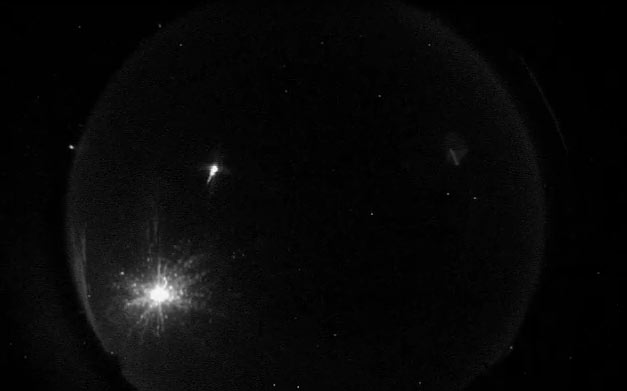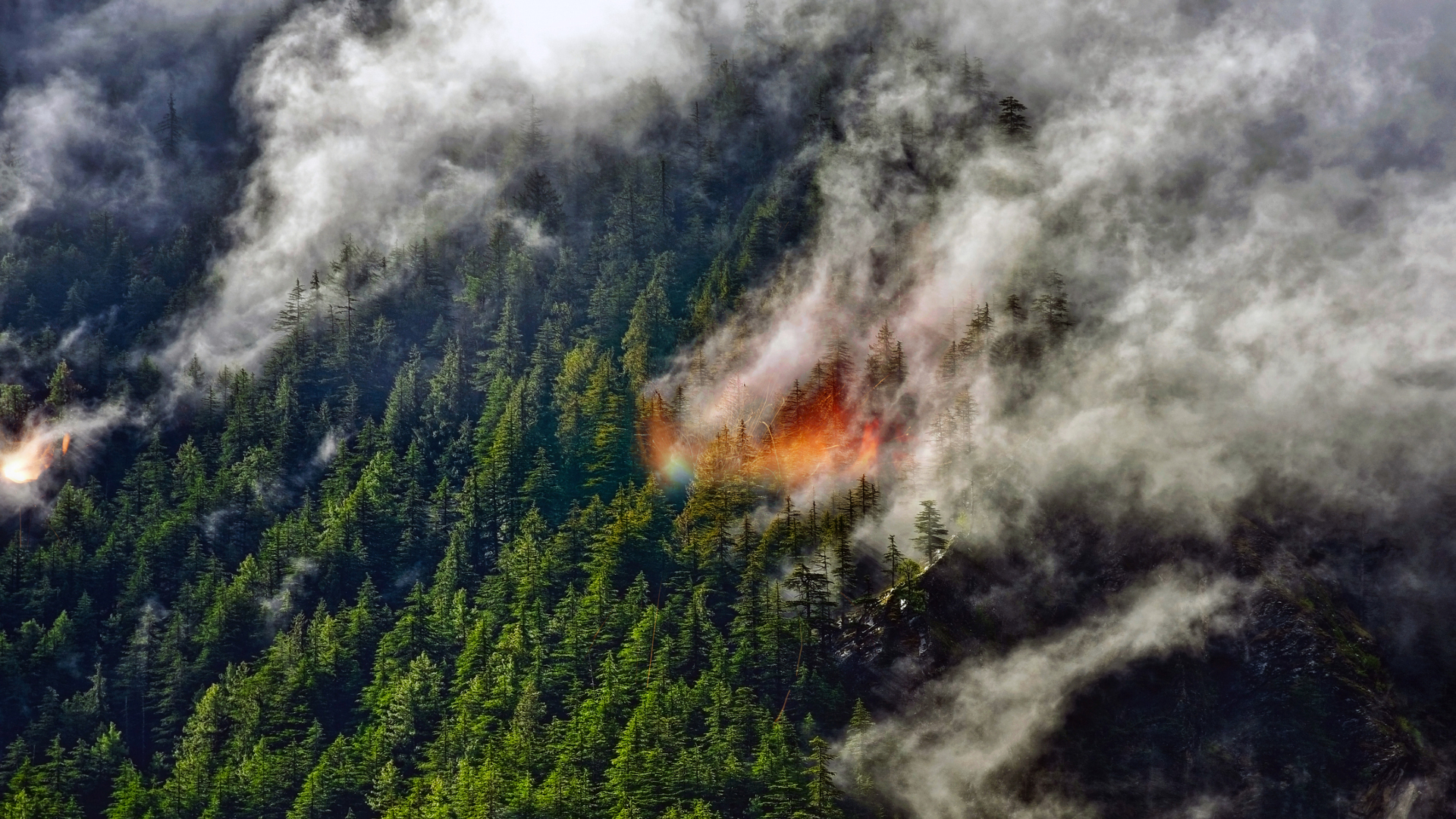Brilliant Fireball Over New Mexico Caught in Video

A brilliant fireball lit up the night sky above parts ofNew Mexico and Texas this week in a fiery display recorded by a skywatchingcamera.
The fireball, thought to be created by a small spacerock, occurred Tuesday night (Sept. 21) at about 11:01 p.m. EDT (0301 GMT) andwas captured in a video camera as the meteor carved its fiery trail across thesky. It lasted 23 seconds and covered parts of New Mexico and west Texas,according to the website Spaceweather.com. [Videoof the Sept. 21 fireball.]?
"I was inside at the time, but heard and felt thesonic boom," said radio astronomer Thomas Ashcraft, who operates theall-sky camera 20 miles (32 km) outside of Santa Fe, NM that recorded thefireball as it flew overhead.
At first, Ashcraft thought the sound was thunder, but nostorms were expected. Then a phone call inquiry led him to check his camera'sdata, where he saw "a spectacular meteor occurrence."
"At first I thought that this might have been spacejunk or satellite debris re-entering the Earth'satmosphere due to the low speed," Ashcraft told SPACE.com in an e-mail."But upon further analysis, I am pretty sure this was a natural meteoricevent, possibly asteroidal."
According to the skywatching website Spaceweather.com,the fireball prompted many calls to a TV news station in Albuquerque, NM, amongother reports.
Ashcraft said some witnesses? described the fireball as"white and shedding sparks," blazing "like a firework," orshining bright with red and yellow colors.
Breaking space news, the latest updates on rocket launches, skywatching events and more!
"It was not quite as bright as the moon,"Ashcraft said. The moon appears as a bright, unmoving disc in the fireball video.
But the fireball was still dazzling, and is one the topthree events Ashcraft has recorded in the last four years.
"A fireball this size only happens once or twice peryear over one observing location," he said.
Meteorfireballs are fallen debris from comets or other space rocks. Asthe debris hits Earth's atmosphere, it heats up and produces the brilliantstreaks of light which we sometimes call shooting stars.Though most meteors are destroyed during this process, some make it to theground and are known as meteorites.
Many bright fireballs go unrecorded and often evencompletely unnoticed because they fall over remote areas or over the oceans(and Earth?s surface is about three-quarters oean).
Ashcraft uses an experimental camera on loan from SandiaNational Laboratories in New Mexico. The Sentinel all-sky camera is anear-infrared low light video camera outfitted with a fish-eye lens. It canobserve fireballs that occur anywhere within a 350-mile (563-km radius).Ashcraft has added a forward scatter radio meteor array to the camera, whichcan sometimes pick up sounds.
"If you listen closely to this fireball you will beable to hear some sound, though it is subtle," he said.
- Videoof Fireball Over Santa Fe on Sept. 21, 2010
- LeonidMeteor Shower Photos 1, 2, 3, 4
- MeteorFragment From Wisconsin Fireball Discovered by Farmer

Tariq is the award-winning Editor-in-Chief of Space.com and joined the team in 2001. He covers human spaceflight, as well as skywatching and entertainment. He became Space.com's Editor-in-Chief in 2019. Before joining Space.com, Tariq was a staff reporter for The Los Angeles Times covering education and city beats in La Habra, Fullerton and Huntington Beach. He's a recipient of the 2022 Harry Kolcum Award for excellence in space reporting and the 2025 Space Pioneer Award from the National Space Society. He is an Eagle Scout and Space Camp alum with journalism degrees from the USC and NYU. You can find Tariq at Space.com and as the co-host to the This Week In Space podcast on the TWiT network. To see his latest project, you can follow Tariq on Twitter @tariqjmalik.
